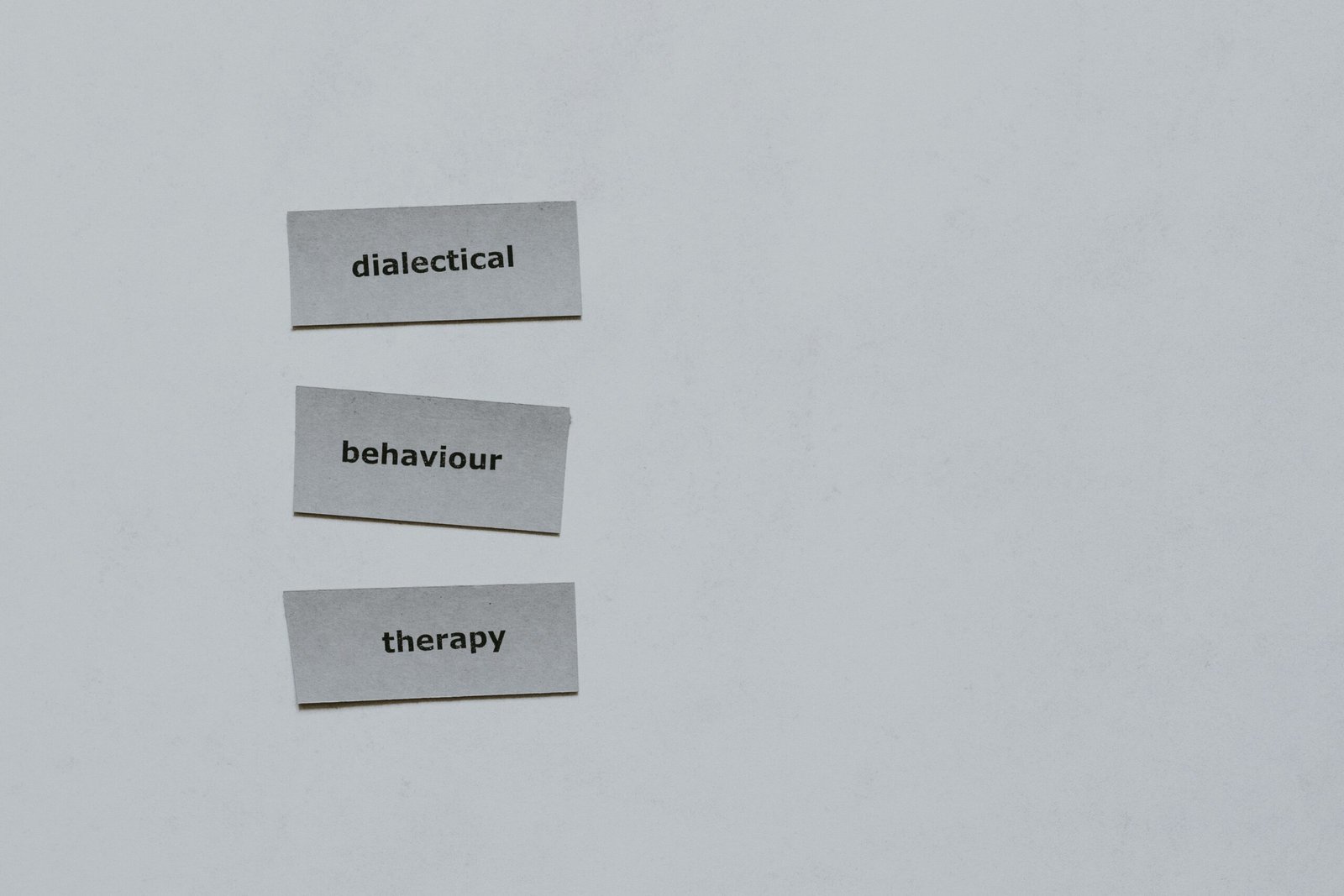More people than ever are mingling with a myriad of potential new romantic partners through online dating. Fun for some but anxiety-provoking for others, especially for those with insecure attachment styles.
To better understand this, first we’ll take a look at the four attachment styles and how they are formed. This will provide you with clues about your own attachment style and later help you to understand how you can work on forming better relationships in the present. This article will also include a special focus on anxious attachment and look at a client in my practice struggling with this and how we worked together.
The Four Attachment Styles And How They Are Formed
Attachment styles are primarily shaped during childhood through interactions with our primary caregivers, typically parents or guardians. The emotional availability, responsiveness, and consistency of these caregivers in meeting a child’s needs play a crucial role in forming the attachment style that persists into adulthood. Here’s how each attachment style develops:
1. Secure Attachment
- Formation: Secure attachment is formed when caregivers are consistently responsive, emotionally available, and supportive of the child’s needs. These caregivers provide a safe and nurturing environment where the child feels valued, understood, and protected.
- Impact on the Child: The child learns that they can trust others and rely on them for comfort and support. This fosters confidence in exploring the world, knowing that they have a secure base to return to when needed.
2. Anxious (Preoccupied) Attachment
- Formation: An anxious attachment style often develops when caregivers are inconsistent in their responsiveness. Sometimes they are nurturing and attentive, but other times they are unavailable or indifferent, leaving the child unsure of when their needs will be met.
- Impact on the Child: The child becomes hyper-focused on the caregiver’s availability, developing a strong fear of abandonment. They may become overly clingy or needy, constantly seeking reassurance and attention to feel secure.
3. Avoidant (Dismissive) Attachment
- Formation: Avoidant attachment is often formed when caregivers are emotionally distant, unresponsive, or rejecting of the child’s needs. These caregivers may discourage emotional expression or show discomfort with closeness and affection.
- Impact on the Child: The child learns to rely on themselves rather than others, suppressing their emotional needs. They become more independent and self-sufficient, avoiding vulnerability and intimacy to protect themselves from rejection or disappointment.
4. Disorganized (Fearful-Avoidant) Attachment
- Formation: Disorganized attachment typically forms when the caregiver is a source of both comfort and fear, often in cases of abuse, neglect, or trauma. The caregiver may behave unpredictably, oscillating between nurturing and frightening behaviors, leaving the child confused about how to seek safety.
- Impact on the Child: The child develops a contradictory approach to relationships, both craving and fearing closeness. They may experience confusion about trust and safety, leading to erratic and unpredictable behaviors in relationships as they struggle to reconcile their fear of abandonment with their fear of intimacy.
Attachment Styles and Romance
Attachment styles profoundly influence how we interact with our partners. For example, someone with a secure attachment style is likely to handle conflict with calm and open communication, while someone with an anxious attachment style may become overwhelmed by fear of rejection, leading to emotional outbursts or constant seeking of reassurance.
Similarly, individuals with an avoidant attachment style may withdraw or shut down when faced with emotional conflict, often leaving their partner feeling ignored or unsupported. Those with a disorganized attachment style may struggle to trust their partner and alternate between seeking closeness and pushing them away. This leads to a turbulent dynamic that can be difficult for both partners to navigate.
By understanding how attachment styles shape communication, intimacy, and emotional regulation, couples can better navigate the challenges that arise in relationships.
Anxious attachment and online dating
With what we know about anxious attachment and the need for reassurance, it makes sense that this group would struggle with online dating. This method of dating is riddled with uncertainty and a lack of immediate feedback, which can trigger their deepest fears of abandonment and rejection.
Let’s pick this apart a bit. First of all, there are the delayed responses. In online dating, messages are not always answered right away, which can cause intense anxiety for someone with an anxious attachment style. They may interpret the delay as rejection or disinterest, leading to overthinking, insecurity, and a need for constant reassurance.
In the early stages of online dating, intentions can be vague and this presents the next problem. People with anxious attachment often crave clarity and commitment, and this uncertainty can fuel their fears of being left or overlooked.
Anxiously attached individuals also tend to read deeply into text messages or the tone of communication, looking for signs of rejection or abandonment. The lack of nonverbal cues like facial expressions or body language in online dating can make it harder for them to gauge emotional connection, leading to over-analysis and stress.
Then there’s the fear of ghosting: Ghosting, or suddenly cutting off communication without explanation, is common in online dating. This behavior can be particularly painful for people with anxious attachment, as it reinforces their fears of being abandoned and can cause emotional distress.
And finally, people with anxious attachment often need frequent validation to feel secure. In online dating, where the pace of communication is inconsistent, this need for reassurance is not always met, which can leave them feeling insecure or anxious.
Meet Sarah…
In therapy, I’ve been working with Sarah (name changed for privacy), a 28-year-old woman who is navigating the complexities of online dating while grappling with her anxious attachment style. Sarah has always been deeply invested in her relationships, often seeking constant reassurance from her partners, and feeling a strong sense of insecurity when they are unavailable. These patterns have intensified since she began using dating apps, where the ambiguous nature of online communication seems to be amplifying her anxieties.
Sarah frequently tells me about her experiences with messaging potential partners. For example, she shared a recent story about Mark, a man she matched with on a dating app. Their initial conversation was positive, and they exchanged several messages. However, after a day without a reply from him, Sarah began to spiral. She expressed in our session how her thoughts immediately jumped to the worst-case scenario: “Did I say something wrong? Does he think I’m too needy? Is he just not interested anymore?”
These anxieties led her to check her phone obsessively, re-read their messages, and even draft multiple follow-up texts before deciding to send another message asking if everything was okay. When Mark finally responded—simply mentioning he had been busy at work—Sarah felt a temporary sense of relief. But this relief was short-lived, as the pattern repeated itself with the next delay in his response.
In therapy, we’re working on helping Sarah understand that her fears of abandonment stem from her anxious attachment style, which likely developed from early relationships in her life where she felt unsure of her emotional security. We’ve been exploring how this past conditioning shapes her reactions to ambiguity in online dating. I’ve encouraged her to practice self-soothing techniques when she feels the urge to seek reassurance, such as grounding exercises and reframing her internal dialogue. For example, instead of immediately assuming rejection, we’re working on creating more balanced thoughts like, “It’s possible he’s busy, just like he said last time.”
We’re also exploring the role boundaries play in her relationships. Sarah often sacrifices her own needs to keep others close, which can perpetuate her feelings of anxiety and dependency. By establishing healthy emotional boundaries, both online and offline, she can begin to create more secure connections without overwhelming her partner or herself.
Sarah’s journey with online dating is still a work in progress, but through therapy, she is slowly learning to manage her anxieties, communicate her needs in a healthier way, and recognise that her sense of self-worth isn’t determined by someone else’s immediate response. While the uncertain nature of online dating will always carry some level of ambiguity, Sarah is developing the tools to cope with that uncertainty, rather than letting it define her relationships.
Developing A Healthy Communication Style
In therapy, the goal for Sarah is to develop a healthier communication style that allows her to express her needs without feeling overwhelmed by anxiety or relying on constant reassurance. Developing this skill requires addressing both her internal dialogue and her outward communication with potential partners. Here’s how we are approaching this process:
1. Building Self-Awareness
The first step is helping Sarah become more aware of her emotional triggers and patterns. When she feels anxious, especially when awaiting a response from someone she’s dating, her thoughts tend to spiral into worst-case scenarios. In therapy, we work on recognising these thoughts and labelling the emotions behind them, such as fear, insecurity, or a need for validation. By bringing these feelings into conscious awareness, Sarah is better able to understand what’s driving her anxiety, which is crucial before she communicates with others.
2. Practicing Self-Soothing Techniques
Before Sarah reaches out to someone in a panic, she is learning to pause and soothe herself emotionally. Techniques like deep breathing, mindfulness exercises, or simply stepping away from her phone allow her to regulate her nervous system and think more clearly. The aim is to give her some emotional space before reacting impulsively. Once she feels calmer, she is in a much better place to communicate from a balanced mindset rather than from fear or insecurity.
3. Reframing Thoughts
In therapy, we’re working on cognitive restructuring—helping Sarah challenge the negative assumptions she makes when someone doesn’t respond immediately. Instead of automatically assuming rejection or abandonment, she practices reframing her thoughts: “It’s possible they are busy, and it doesn’t mean they’ve lost interest,” or “This delay doesn’t define my value or the relationship.” This reframing helps Sarah break the cycle of anxiety-driven communication.
4. Using “I” Statements
When Sarah does communicate with someone, we’re focusing on helping her use “I” statements, which express her feelings without sounding accusatory or overly dependent. For example, instead of sending a message that could feel pressuring, like, “Why didn’t you text me back?” she can say, “I’ve noticed I feel anxious when I don’t hear back and just wanted to check in.” This way, Sarah can express her emotions in a way that invites openness and connection, rather than putting her partner on the defensive.
5. Setting Boundaries and Expectations
Another crucial part of Sarah’s journey toward healthier communication is setting boundaries. We are working on helping her feel comfortable with letting her partner know what she needs without fear of pushing them away. For instance, she can communicate her desire for more regular check-ins in a way that feels non-demanding, like: “I feel more connected when we communicate regularly. Would it be okay to check in more often?” This kind of boundary-setting is respectful and helps Sarah feel secure, without making the other person feel overwhelmed.
6. Embracing Ambiguity
Online dating, by nature, is often filled with periods of ambiguity and uncertainty. Sarah is learning to tolerate these moments rather than rush to resolve them. We discuss how healthy communication includes knowing when to give space and let the relationship unfold naturally. By practicing patience and accepting that not every message or interaction will provide immediate clarity, Sarah is learning to reduce her anxiety and communicate from a more grounded place.
7. Receiving Feedback and Adjusting
Sarah is also learning to be open to feedback from her dating partners. She may discover that certain communication styles don’t always work, and that’s okay. We explore how she can ask for feedback without fear of rejection: “Is this communication style working for you?” This encourages a dialogue where both partners can feel heard, and Sarah can adjust in ways that feel good to both her and her partner.
How to Identify Your Own Attachment Style
As a therapist, I often work with individuals to help them identify their own attachment styles and recognise patterns in their relationships.
Self-reflection, past relationship experiences, and certain self-assessment tools can offer insight. Understanding your attachment style—and your partner’s—can open the door to deeper empathy and more effective communication.
Can Attachment Styles Change Over Time?
Yes, attachment styles can change. While attachment styles are often deeply ingrained, they are not fixed. Through self-awareness, therapy, and healthy relationship experiences, individuals can move toward a more secure attachment style.
Therapy, in particular, can be instrumental in helping people work through unresolved attachment issues, process past trauma, and develop healthier relational patterns.
In fact, one of the most rewarding aspects of my work as a psychotherapist is witnessing this transformation. As individuals and couples grow in self-awareness and emotional regulation, they often move toward more secure, stable, and fulfilling relationships.
Round UP
Understanding your attachment style—and that of your partner—can be a powerful tool for building stronger, healthier romantic relationships. By gaining insight into how these patterns shape your emotions and behaviors, you can foster greater empathy, improve communication, and create more secure, lasting connections.
As a psychotherapist, I encourage individuals to embrace this journey of self-discovery and growth. Whether through therapy, self-reflection, or positive relationship experiences, there is always the potential to heal and move toward deeper, more meaningful connections.










